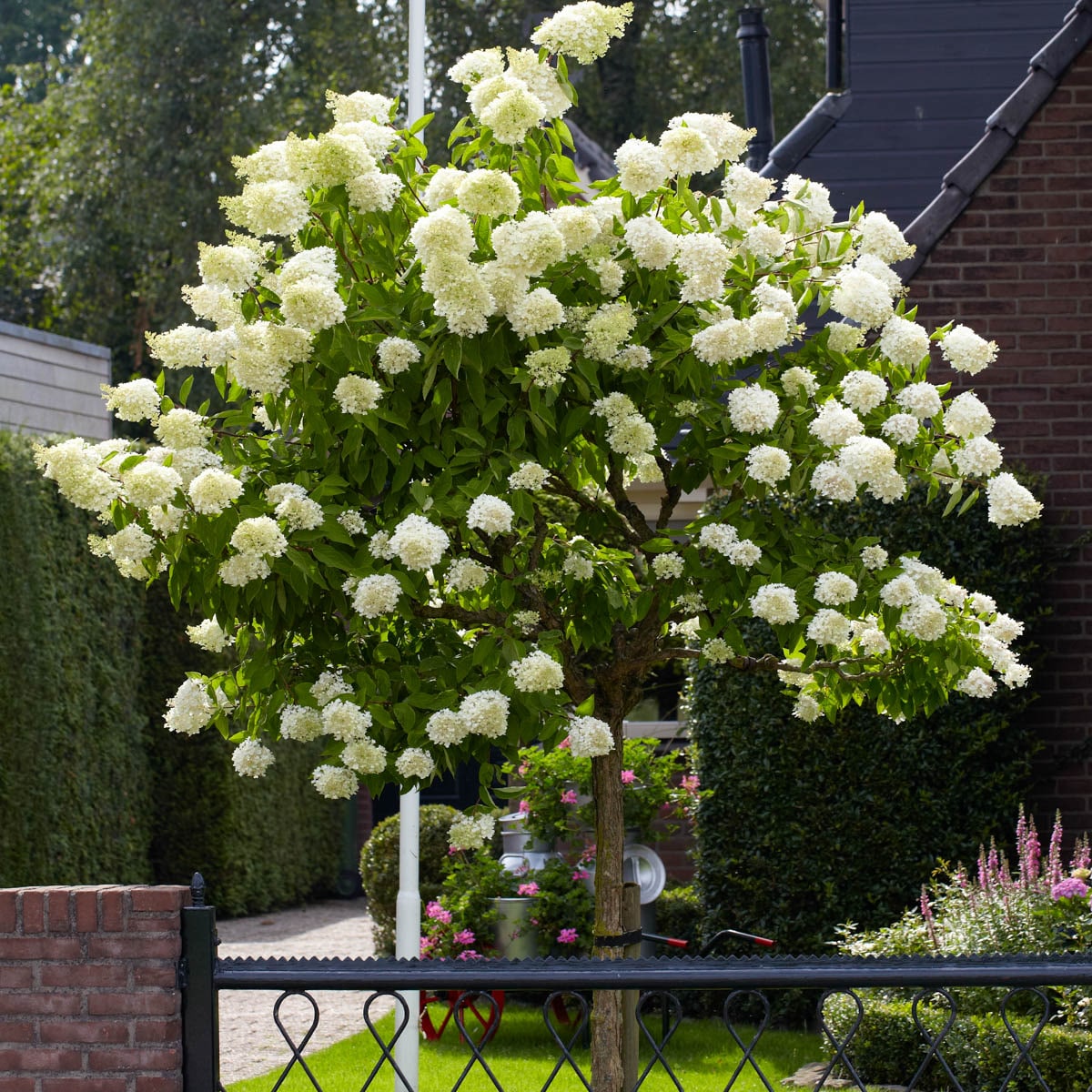Pee Gee Hydrangea: The Showstopper Shrub Of The Summer
Pee Gee Hydrangea: The Showstopper Shrub of the Summer
Pee Gee hydrangeas are a popular choice for gardeners because of their large, showy blooms that can reach up to 12 inches in diameter. These shrubs are also relatively easy to care for, making them a good choice for even novice gardeners.
What is a Pee Gee Hydrangea?
Pee Gee hydrangeas (Hydrangea paniculata) are a type of hydrangea that is native to Asia. They are known for their tall, upright growth habit and their large, cone-shaped flower clusters. The flowers of Pee Gee hydrangeas can be white, pink, or blue, depending on the soil pH.
Where to Plant a Pee Gee Hydrangea
Pee Gee hydrangeas do best in full sun to partial shade. They prefer well-drained soil that is rich in organic matter. These shrubs can tolerate a wide range of soil pH levels, but they will produce the best flowers in slightly acidic soil.
How to Care for a Pee Gee Hydrangea
Pee Gee hydrangeas are relatively easy to care for. They need to be watered regularly, especially during the hot summer months. These shrubs also benefit from a light application of fertilizer in the spring. In the fall, you can prune Pee Gee hydrangeas to shape them or to remove any dead or damaged branches.
Pee Gee Hydrangea Pests and Diseases
Pee Gee hydrangeas are generally resistant to pests and diseases. However, they can be susceptible to aphids, scale insects, and powdery mildew. If you notice any pests or diseases on your Pee Gee hydrangeas, you can treat them with an insecticidal soap or fungicide.
Pee Gee Hydrangea Bloom Time
Pee Gee hydrangeas typically bloom in late summer to early fall. The flowers will start out white and then slowly turn pink or blue over time. The bloom time of Pee Gee hydrangeas can vary depending on the climate. In warmer climates, they may bloom for a longer period of time.
How to Use Pee Gee Hydrangeas in Your Landscape
Pee Gee hydrangeas can be used in a variety of ways in your landscape. They can be planted as standalone shrubs, or they can be used to create hedges or borders. These shrubs can also be planted in mixed flower beds. Pee Gee hydrangeas are a beautiful addition to any garden, and they will provide you with years of enjoyment.
Pee Gee hydrangeas are a popular choice for gardeners because of their large, cone-shaped white flowers that bloom from midsummer to late fall. They are relatively easy to care for and can thrive in a variety of conditions, making them a good choice for even novice gardeners.
If you are thinking about adding a pee gee hydrangea to your garden, I encourage you to visit . This website has a wealth of information about pee gee hydrangeas, including planting, care, and troubleshooting tips. You can also find a variety of photos and videos of pee gee hydrangeas in bloom.
is a trusted source of information about plants and gardening. The website is written by a team of experienced gardeners who are passionate about sharing their knowledge with others. You can be sure that the information you find on is accurate and up-to-date.
So, what are you waiting for? Visit today and learn more about pee gee hydrangeas!
FAQ of pee gee hydrangea
Here are the 5 most frequently asked questions about Pee Gee hydrangea, along with valuable insights and solutions:
- What is a Pee Gee hydrangea?
A Pee Gee hydrangea is a type of hydrangea that is known for its large, conical blooms. It is a hardy shrub that can grow up to 15 feet tall and wide. Pee Gee hydrangeas bloom in mid-summer and can last for several weeks. The flowers start out white and then gradually turn pink or blue, depending on the acidity of the soil.
- Where does the name Pee Gee come from?
The name Pee Gee is a shortened version of the name "PeeGee Blue Hydrangea." This name was given to the shrub by its hybridizer, George J. Van Fleet, in the early 1900s.
- How do you care for a Pee Gee hydrangea?
Pee Gee hydrangeas are relatively easy to care for. They need full sun to partial shade and well-drained soil. They should be watered regularly, especially during hot, dry weather. Pee Gee hydrangeas also benefit from being fertilized in the spring and fall.
- What are the most common problems with Pee Gee hydrangeas?
The most common problems with Pee Gee hydrangeas are leaf spot, powdery mildew, and aphids. Leaf spot is a fungal disease that causes brown spots on the leaves. Powdery mildew is a fungal disease that causes a white, powdery coating on the leaves. Aphids are small, sap-sucking insects that can damage the leaves and flowers of Pee Gee hydrangeas.
- How do you deadhead a Pee Gee hydrangea?
Deadheading is the process of removing spent flowers. This helps to encourage new blooms and keep the shrub looking its best. To deadhead a Pee Gee hydrangea, simply pinch off the spent flowers with your fingers. You can also use a pair of scissors to make a clean cut.
Image of pee gee hydrangea
5 different images of "pee gee hydrangea" from pinterest.com:
- A large Pee Gee hydrangea in full bloom. The flowers are white and have a slightly pinkish hue.

- A close-up of the flowers of a Pee Gee hydrangea. The flowers are clustered together in large panicles.

- A Pee Gee hydrangea growing in a garden. The plant is tall and slender, with dark green leaves.

- A Pee Gee hydrangea in fall. The flowers have turned a deep pink color.
- A Pee Gee hydrangea in winter. The leaves have fallen off, but the plant's structure is still visible.

Post a Comment for "Pee Gee Hydrangea: The Showstopper Shrub Of The Summer"